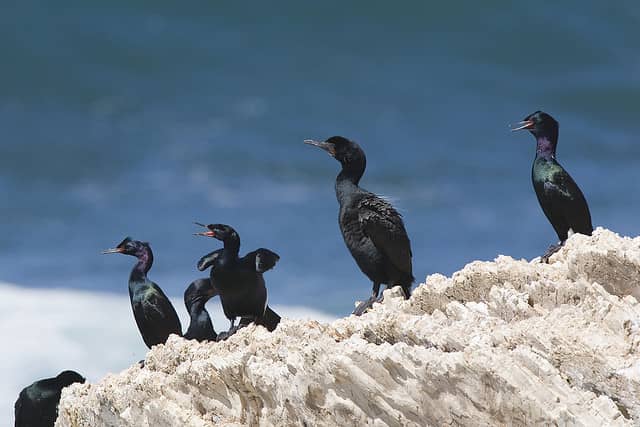Cormorant Numbers Decreasing in Michigan, Great Lakes
OutdoorHub 09.15.11

The number of cormorant nests in Michigan has been decreasing since population reduction actions were implemented in 2004, the Department of Natural Resources announced today.
Cormorants, which were increasing in numbers throughout the 1980s and 1990s, have been blamed for declining sport fisheries in a number of areas. The breeding population in Michigan stabilized in the late 1990s and early 2000s at around 30,000 nests. Since 2004, the U.S. Department of Agriculture’s Wildlife Services Division has been oiling eggs at nesting sites and removing adults from the population to meet goals set by the DNR.
Additional management activities have also been performed by Tribal natural resource agencies to address concerns related to cormorant impacts to commercial and sport fisheries, as well as alleviating potential conflicts with other species of nesting birds and reduce damage to native plants.
Comprehensive statewide counts from 2007 and 2009 document a 38 percent decrease in breeding cormorants in Michigan, a drop from 29,509 nests in 2007 to 18,200 nests in 2009. The scheduled 2011 breeding cormorant count is underway, and a final count will be available in the fall.
Dr. Francesca Cuthbert of the University of Minnesota, who coordinates the count throughout the U.S. Great Lakes Region, has noted further decreases on breeding colonies in Michigan.
“Preliminary indications are that the final estimate for 2011 will be lower than that for 2009. This trend has been reported by other Michigan researchers and staff from USDA – Wildlife Services,” Cuthbert noted.
This mirrors the trend seen at breeding sites where USDA – Wildlife Services conducts population reduction activities; from 2007 through 2010, the nest count at these sites decreased by 37 percent, from 23,345 nests in 2007 to 14,685 nests in 2010.
Population control methods have not been the only contributor to declining cormorant numbers. Food web changes including reductions in alewives and the invasion of the round goby have altered the food supply for cormorants. Declines in aquaculture farms and conversion to dry-land operations in the southern United States have removed valuable wintering habitat, and cormorant culling operations at southern aquaculture facilities reduced the number of birds surviving the winter to return to Michigan.
The cumulative effect has been to drive cormorant numbers down to the point where the statewide management goal of 5,000-12,500 nests may soon be reached.
“The DNR’s management goal seeks to balance the desires of stakeholders with the Department’s responsibility to manage for healthy populations of fish and wildlife. We don’t want to designate the double-crested cormorant as an endangered species due to declining numbers, but we also want to ensure that recreational fishing opportunities are protected,” said Russ Mason, DNR Wildlife Division chief.
The Michigan Department of Natural Resources is committed to the conservation, protection, management, use and enjoyment of the state’s natural and cultural resources for current and future generations. For more information, go to www.michigan.gov/dnr.

